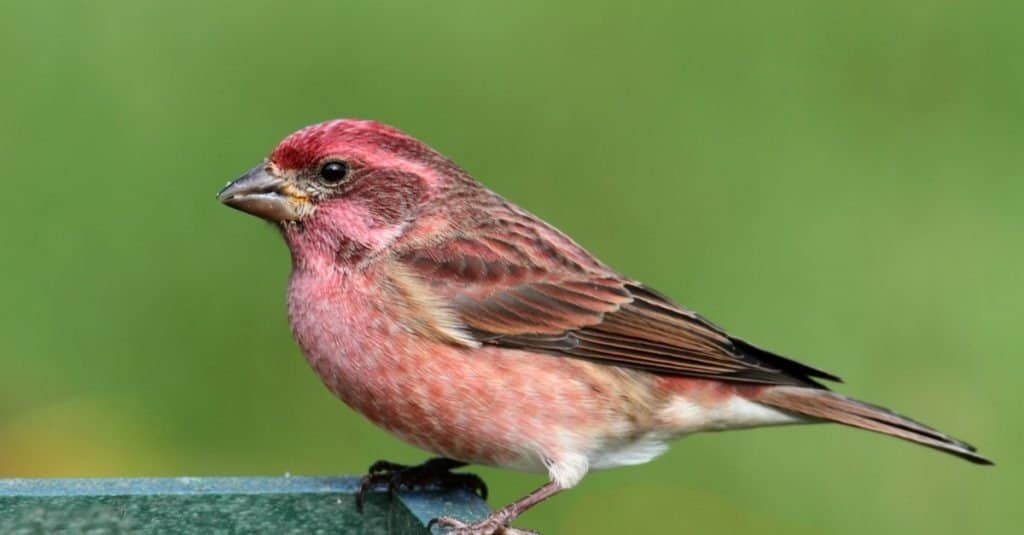Table Of Content

The order Passeriformes, commonly known as passerines or perching birds, includes more than half of all bird species. Passerines are characterized by three forward-facing toes and one backward-facing toe, which facilitates perching on branches. House Finches are generally not known for long-distance migration. Many populations are non-migratory, residing in their breeding areas throughout the year. However, there can be some local movements and dispersals in search of food and suitable nesting sites. The male’s vibrant plumage and melodious song likely contributed to its selection.
Purple Finch Vs. House Finch: A Comparison Of The Finch Species
They also have a white eyebrow and mustache stripe that female/immature House Finches lack. Both birds are capable of territorial aggression, but House finches are much less territorial than Purple finches on the whole. House sparrows are timid and sociable among finches, whereas Purple finches are more headstrong and aggressive. The Purple finch’s warble is gentler and calmer, whereas the House finch alternates between high and low notes. House finch songs are typically short; around 1 to 4 s long with 4 to 30 syllables. So, if you live close to a city, it’s quite likely that the only type of finch you’re going to see is the house finch.
Food
Although these finches may argue with each other over breeding territories and food, for the most part, House Finches get along with each other. The House Finch is a very social bird that forms pairs when breeding but flocks together at other times of the year. They can occur in a variety of open and semi-open habitats as well as urban areas. The Purple Finch and the House Finch are around the same size as a sparrow. Although they aren’t in the same family as sparrows, they are shaped a lot like those seed-eating birds. Both species also have rather long wings to help them fly long distances between food sources but, as with most migrant species, those of the Purple Finch have longer primary feathers.
Markings

These subspecies may exhibit slight differences in coloration, size, and vocalizations, reflecting their adaptations to different regions. This size difference can be noticeable when observing the two species side by side, with the Purple Finch appearing a bit more robust compared to the House Finch. The male House Finch doesn’t have as much red on the neck and back as the Purple Finch.

Similar SpeciesHouse Finch
In terms of habitat, House Finches are largely non-migratory and live throughout most of the mainland United States, while Purple Finches have a more particular range. Male Purple Finches, however, display a blurrier, lighter pattern on the chest and flanks, making it more obvious which species you’re observing. For the most part, they have no need to migrate, though some eastern House Finches will migrate southward in the winter. Both the Purple Finch and the House Finch face similar types of predators, given that they share habitats and ecological niches.
Do Purple Finches use birdhouses?
It prefers much more forested habitats such as coniferous and mixed forests in the boreal zone. The House Finch is native to a wide range of arid, open, and semi-open habitats. It is native to the western USA from southern British Columbia south to southern Mexico, and east to areas just east of the Rocky Mountains. This adaptable bird avoids dense forest but will live in oak-juniper woodlands, open coniferous forest, deserts, and shrubby habitats from sea level to more than 11,000 feet.
Male house finches are often gray, brown, or yellow to light orange throughout the rest of their body except their head and chest. Even the lightest colored purple finch is more boldly marked than a house finch. In general, purple finches can be found in less disturbed habitats, meaning you aren’t going to find a purple finch nest in a town or around it as often.
Get the best of Birdfact
28 Wonderful Wintry Photos of Birds in Snow - Birds & Blooms
28 Wonderful Wintry Photos of Birds in Snow.
Posted: Mon, 06 Nov 2023 08:00:00 GMT [source]
Typically they leave Canadian breeding grounds to winter widely across the central and southeastern U.S, returning to specific regions roughly every other year. Females are coarsely streaked below, with strong facial markings including a whitish eyebrow and a dark line down the side of the throat. House Finches and Purple Finches are of similar size, but there are some differences. House Finches and Purple Finches produce similar songs, but their distinctive call notes can help you identify them.
Do Purple Finches and House Finches flock together?
House Finches, on the other hand, demonstrate a remarkable ability to coexist with human structures. They often construct their nests in sheltered locations on buildings, ledges, or even in vents. This adaptability to urban environments sets them apart from their more forest-dwelling counterparts. Although the measurements for each bird can be within close proximity, Adult Purple Finches look larger as they have shorter tails and slightly broader wingspan. It is usually built underneath an overhanging branch in a conifer.
They also have a sharp white eye line and a darker cheek patch, giving them a well-defined facial pattern. How can you make the difference between a common house finch and a purple finch song? Unfortunately, the sounds that both of these species make are quite similar.
House finches nest on the edges of open areas, sometimes on street lamps or in ivy on the sides of buildings. Purple finches nest primarily in forest conifers or dense shrubs, and at times in landscaped areas with trees. How do you tell what type of finch you have in your backyard based on where you live? The habitat of these two species has changed a lot over the years. In areas where they both reside, the purple finch is effectively competing with the house finch, so it doesn’t really thrive.
Even though they have a similar size and weight, the male house finch has a red to orange tint on its head, whereas the male purple finch has a reddish-purple color on most of its body. The difference between these birds becomes clear when you compare the adult males. Purple finches are a deep cranberry or raspberry color on most of their body.
If you have spotted a red breasted finch in your backyard, it’s likely for it to have been a house finch. House Finches typically display orangey-red shades while Purple Finches showcase a darker pink or rosy hue. This accounts for the males—the females of both species have streaky brown plumage. Adult males are rosy red around the face and upper breast, with a streaky brown back, belly, and tail.
House finches only typically eat very small insects, such as aphids, whereas Purple finches eat larger insects, such as spiders and beetles. In winter, they migrate throughout much of the eastern US and are Common in the Great Lakes region and the northeastern US, which is where they mix with House finches. On the west coast, they also migrate down the Pacific Northwest, which is also where they’re likely to be seen alongside House finches. It’d be rare to see Purple finches throughout much of the interior western US states. They now occupy both the east and the west US, but are somewhat less common in eastern Texas, Oklakaha, Nebraska, Kansas, South Dakota and North Dakota. House finches occupy a huge range of habitats ranging from forested lowlands to deserts, cities and coastal regions.

No comments:
Post a Comment